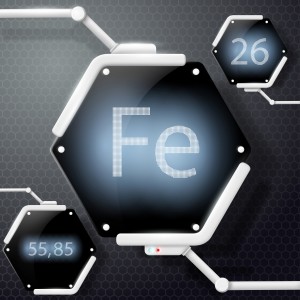New Insight Into Iron-Sulfur Cluster Biogenesis and Related Diseases

 Researchers at Wayne State University in Detroit and the University of Pennsylvania in Philadelphia, recently revealed the mechanism behind the iron binding process in the assembly of iron-sulfur (Fe-S) clusters, a pathway that is defective in disorders such as Friedreich’s ataxia. The study was published in the journal BioMetals and is entitled “Iron loading site on the Fe–S cluster assembly scaffold protein is distinct from the active site.”
Researchers at Wayne State University in Detroit and the University of Pennsylvania in Philadelphia, recently revealed the mechanism behind the iron binding process in the assembly of iron-sulfur (Fe-S) clusters, a pathway that is defective in disorders such as Friedreich’s ataxia. The study was published in the journal BioMetals and is entitled “Iron loading site on the Fe–S cluster assembly scaffold protein is distinct from the active site.”
Fe-S clusters are cofactors vital for the proper functioning of several proteins, such as the ones required for energy production within the mitochondria, small cellular organelles known as the “powerhouse” of cells. Fe-S clusters containing proteins are involved in several biochemical reactions and almost every cellular pathway. The assembly of Fe-S clusters is tightly regulated within cells, as the metals are highly reactive and toxic.
Several rare and apparently dissimilar human diseases have been associated with defects in the process of Fe-S cluster biogenesis. Among them is a disorder called Friedreich’s ataxia, which is a rare inherited disease characterized by progressive damage of the nervous system with degeneration of spinal cord and peripheral nerves that leads to muscle weakness, balance deficits and loss of voluntary coordination of muscle movements. Eventually, FA causes progressive disability, dependence on a wheelchair and reduced life expectancy. Friedreich’s ataxia is caused by a mutation in a gene called frataxin, causing mitochondrial dysfunction, disruption of iron homeostasis and ultimately cell death.
Knowledge on Fe-S cluster biogenesis has mainly derived from studies with yeast mitochondria, where the major assembly pathway for Fe–S clusters is the mitochondrial ISC (iron-sulfur cluster) pathway that uses the protein Isu1 as a scaffold foundation for the assembly. The Isu1 protein acts in association with other proteins to control Fe-S cluster biogenesis, including the mitochondrial frataxin protein that is thought to act as a chaperone for iron delivery. The mechanism behind the selective delivery of iron to Isu1 is, however, a process poorly understood.
In this study, researchers performed calorimetric and spectroscopic analysis to characterize the mechanism through which irons binds to the Isu1 protein from the yeast Saccharomyces cerevisiae.
Researchers found that iron binds to Isu1at a site distinct from the protein’s active site (which comprises three conserved cysteine residues), most likely in a secondary structural region rich in acidic/basic surface exposed residues. In fact, mutations on one of the cysteine residues at the Isu1’s active site did not impair iron binding.
The research team concluded that the iron loading site on Isu1 protein is different from the protein’s active site. Understanding the molecular mechanisms behind Fe-S cluster assembly is clinically relevant as it can offer insight and potential therapeutic targets for diseases related to Fe-S cluster dysfunction, such as Friedreich’s ataxia.






